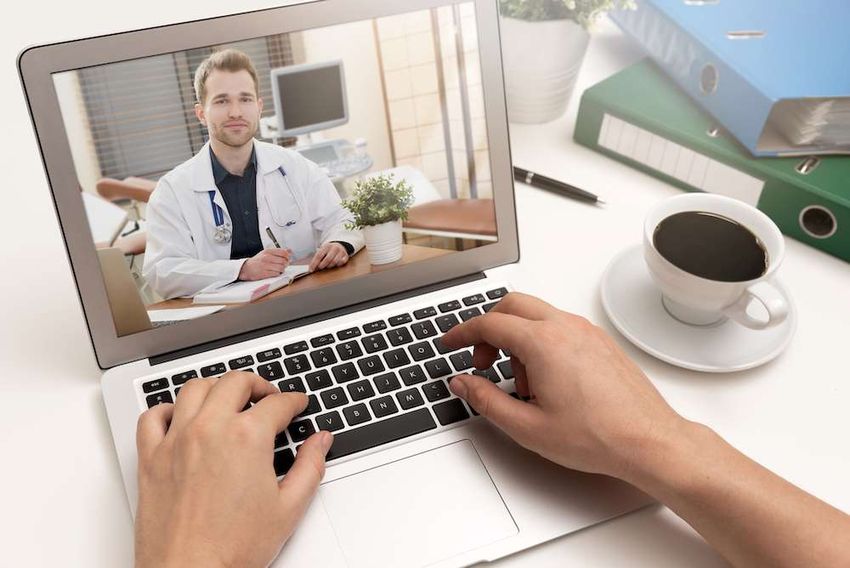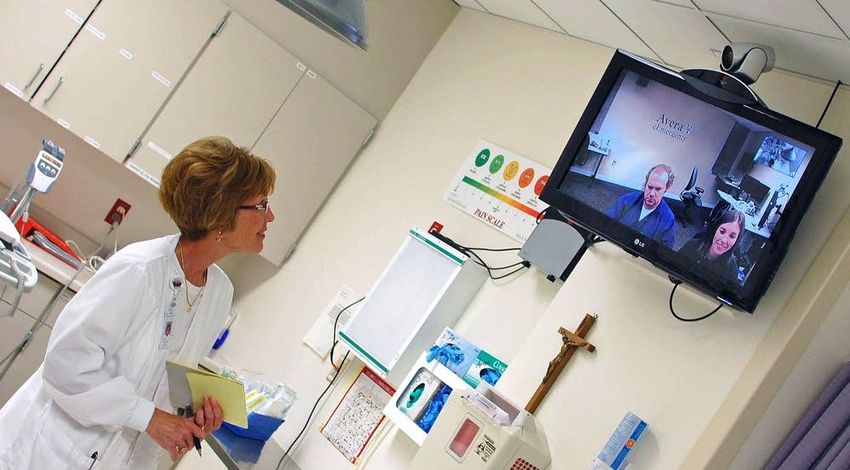Today we’re all caught up in a rapid rhythm of modern life, which leaves us little to no time for unexpected situations. Unfortunately, our health fits into this category, from simple things like teeth cleaning and physicals to potentially more serious issues. A lot of people neglect their health cause they can’t fit a visit to a doctor into their tight everyday schedules full of deadlines and work obligations. Telemedicine seems to be a solution to this problem.
Our lives have been reshaped by technology, and the healthcare system is no exception. Thanks to telecommunications capability, people are now able to consult with their doctors via e-mails, texts, or two-way video. This is what telemedicine is all about – providing an opportunity for patients to receive the needed care from the comfort of their homes or office desks. It is basically a modern version of the doctor’s house call where quality medical care is available via a tablet or smartphone.

source:cnbc.com
Although the telemedicine industry is steadily growing, that doesn’t mean there are no challenges left. As with any technological story, enhancing patients’ services with technology is not an instant thing but a process, and the decision should not be made in haste. There are many benefits, but there are also some limits, and that’s precisely why we’ve put together this list of pros and cons – so you can know exactly where you stand.
We’ll start with the pros:
Page Contents
Time

source:healthtechzone.com
The saying “time is money” has never been truer than today. On the other hand, response time is a crucial factor when it comes to more serious health issues. With telemedicine, patients need only a couple of minutes to register and put their complete health history in, and they’re ready to receive the needed healthcare.
The process of flipping through old magazines in waiting rooms is completely eliminated. Through phone, video, or web chat, patients can easily follow-up on a diagnosis or prescription with their physician. This also eliminates the gap between “this is urgent” and “this can wait” – with telehealth services, the hospital waiting time is minimized for both critical and non-priority patients.
Money

source:prognocis.com
Let’s take a look at the other side of “time is money” matra – Personal visits take up more of the doctors’ time, so it’s normal that most of the doctors will charge less for a telemedicine consultation. Telemedicine also eliminates non-urgent and, therefore, unnecessary ER visits, as well as transportation expenses, which are equally frustrating for regular checkups.
A recently conducted survey by Open Colleges on the topic revealed that reduced travel expenses are especially important for patients in rural communities who are forced to travel for hours only to access key health services. Now, these patients can receive quicker specialist access from the comfort of their homes, which is crucial in case of lifesaving consultations for chronic care plans or specific diseases. No specialist is out of reach, no matter the location.
Telemedicine doesn’t just protect patients’ wallets – it also boosts doctors’ revenue since it reduces no-shows, attracts new patients by reaching a wider geographic region, and turns on-call hours into billable time. Thanks to electronic data storage, monitoring services, and remote analysis, healthcare service costs are significantly reduced for patients, healthcare providers, and insurance companies.
Engagement

source:mprnews.org
Telemedicine offers patients access to different specialists so they can diagnose symptoms more efficiently. They can simply e-mail an X-ray or MRI and get a second opinion. But how many people bother to get a second opinion today? There’s no doubt that patients’ engagement is seeing a downward trend.
Health can be improved and maintained only if patients are committed to that goal, but only if they’re involved and ready to invest in their own well-being and care. An apathetic and disconnected patient can’t possibly be a healthy one. They need to become proactive, and for that, they must be allowed to receive care on their own terms. Many are put off by an unfamiliar clinical environment, so treatment in the comfort of their own home is already a big step towards their engagement.
But the most important way in which telemedicine improves engagement is by improving communication between medical practitioners and patients. It helps them to maintain care schedules and appointments easily, encourages them to reach out with early warning signs and questions, and easily make follow-up appointments to make sure they’re on track.
At this point, it’s time to mention some of the cons:
Technology

source:healthtechzone.com
When we rely on technology, we’re at risk of running into technical problems such as glitches. A disrupted internet connection or loss of power are things that simply happen from time to time. Since patients’ appointments depend on these things, this could complicate online consultations with doctors, but only for a brief period of time. There’s also a question of the patients’ technological literacy – doctors working with older people or those with cognitive disabilities will have a harder time implementing telehealth services.
Resistance
There are always people who are uncomfortable to use new technology – doctors can feel resistance as much as their patients. But since they’re all aware by now of all the advantages listed above, they’re certainly willing to overcome that resistance, so it’s basically a question of providing an adequate training program.
Remoteness

source:healthtechzone.com
This is actually one of the greatest benefits, but we still can’t deny the fact that some non-verbal cues can easily go unnoticed. Full, routine physical exams are often unnecessary, but there are still situations when doctors should be able to touch a patient personally. But in such situations when, for example, a patient needs a test which requires a swab, the telemedicine provider can easily arrange for additional testing.
We think that the pros in terms of time, money, and engagement speak for themselves. As for the cons, they shouldn’t be regarded as drawbacks but as challenges that can be overcome in the future. Technology is constantly evolving, and people are constantly adapting. In the beginning, there is usually a struggle, but after a while, there’s always progress. Naturally, there will be situations where people will need to interact with others physically, but for all other health circumstances, telemedicine certainly provides a much higher level of care than ever before and is only bound to get better as society progresses.





